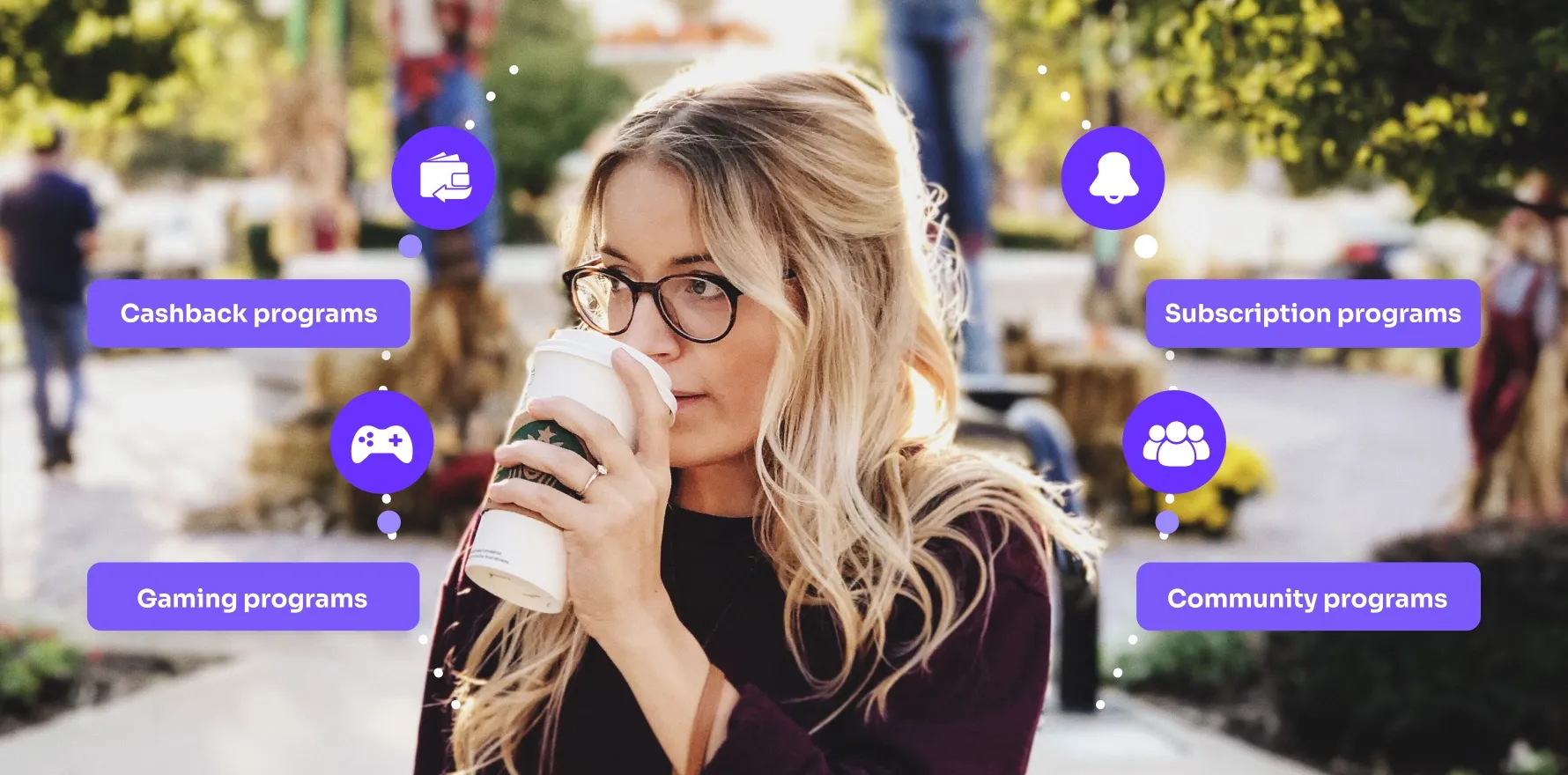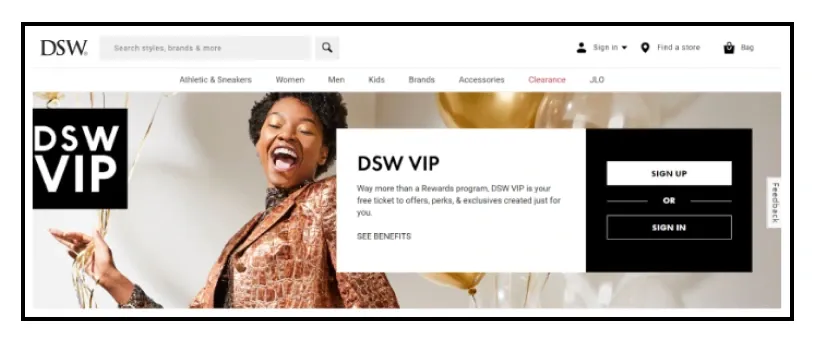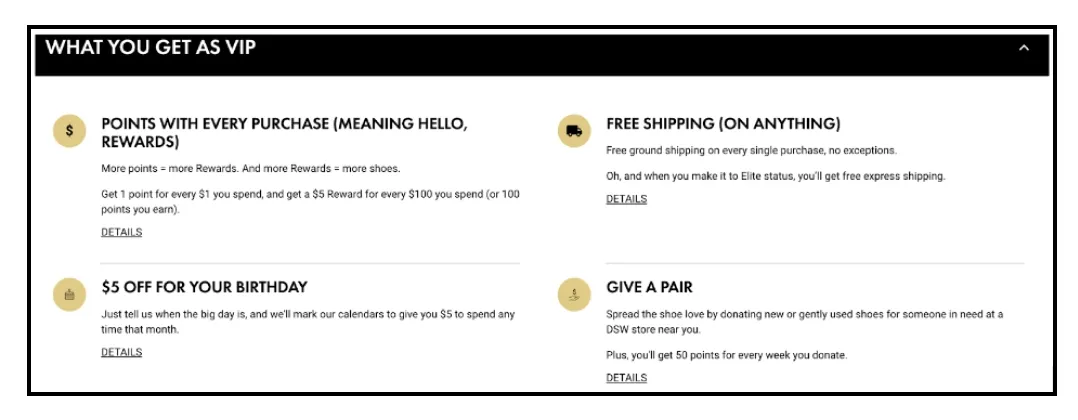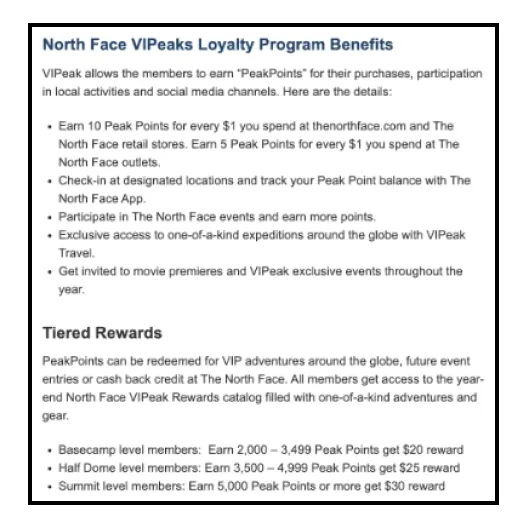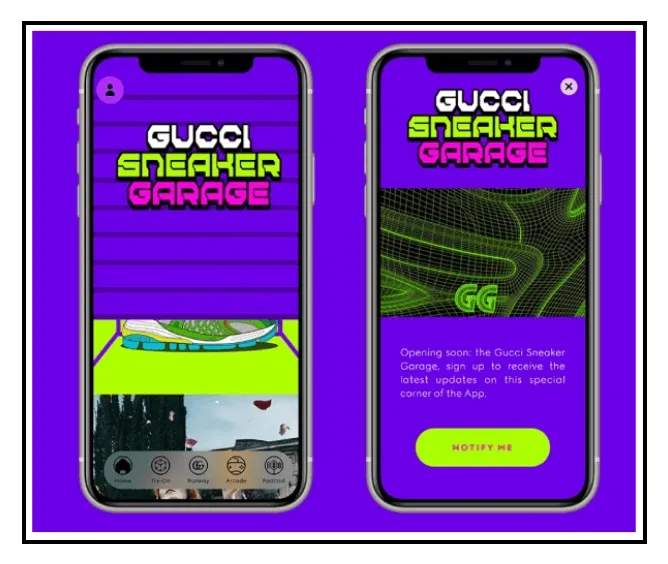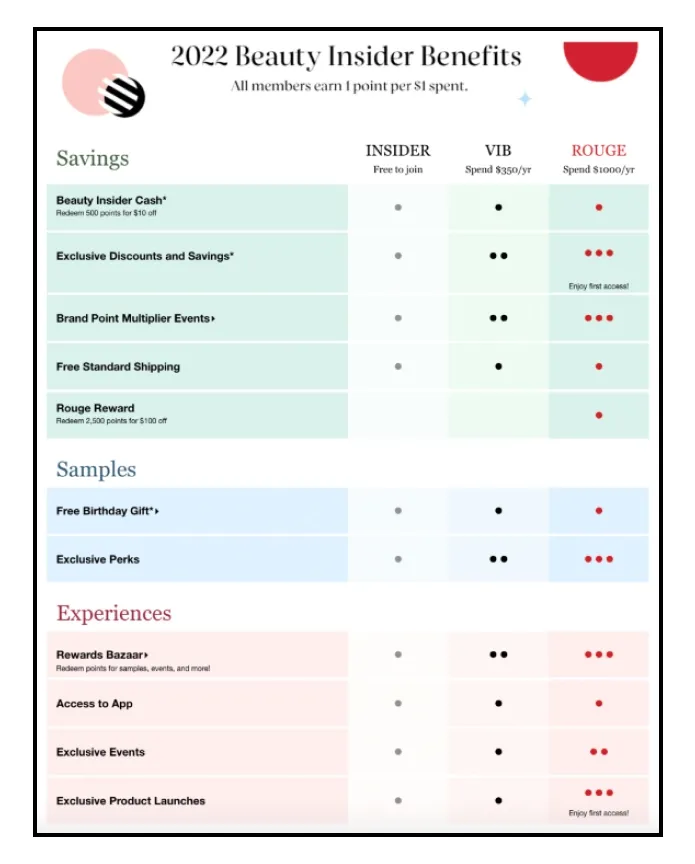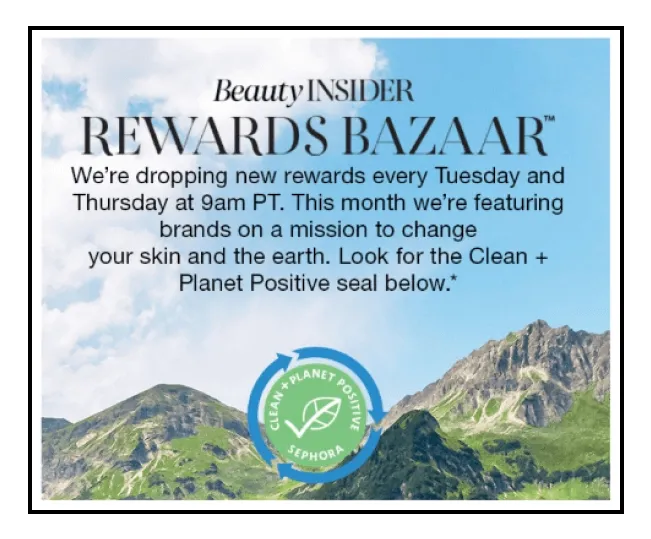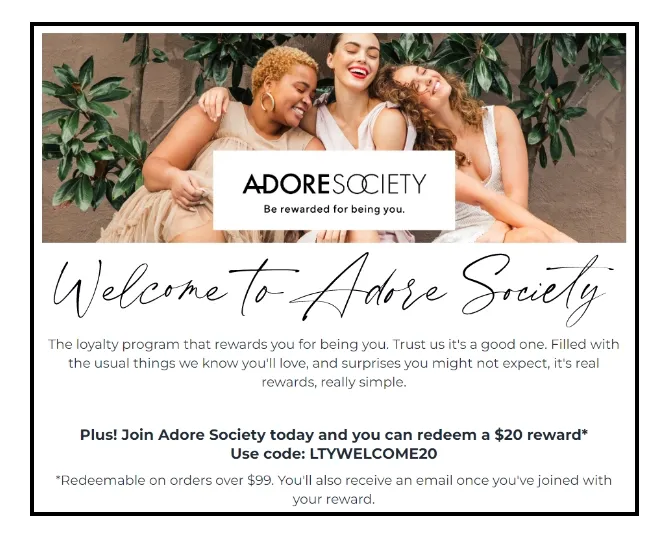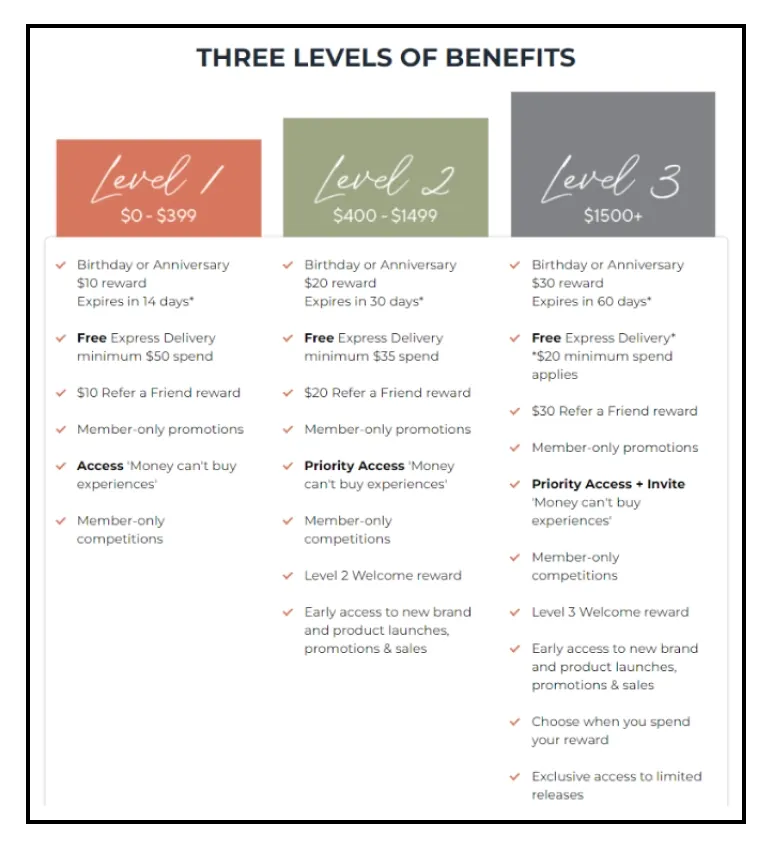Heard of Beauty Pie, a luxury makeup and skincare brand, reeling in higher customer retention rates than behemoths like Spotify and Netflix and 20x more retention than other DTC brands?
That’s the power of customer loyalty, the very premise of Beauty Pie. The company recently raised $100 million in funding on the back of the success of its loyalty program designed around a high-end club membership model.
What are customer loyalty programs?
By definition, a customer loyalty program is a marketing and customer retention strategy that identifies and rewards recurring shoppers. These programs motivate existing customers to keep coming back. Customer loyalty programs leverage emotions like gratitude, loyalty, and rewards to make customers feel valued while also saving money and getting cashbacks or other rewards on their purchases.
Typical programs include insider perks, discounts and promotions, early access, free merchandise, cashback, and coupons, among other techniques to engage and retain shoppers.
But why are these loyalty programs essential for consumer-facing brands?
Consider this – global businesses lose a staggering $1.6 trillion annually due to customers switching brands.
Customer loyalty and trust are powerful drivers in the buying journey. They build brand loyalty and affinity and strengthen brand-customer relationships. This makes loyalty programs an essential tool for customer retention. Your shopper feels more invested in your brand and products, does not switch brand loyalties quickly, and gets more value by spending money with your brand. They believe they get higher returns when they spend with you, not just in terms of discounts, but other perks like priority shipping, gift certificates, exclusive access to products or sale periods, and so on.
The value of customer loyalty programs in your customer retention strategy is evident. For brands, customer retention has a higher ROI than customer acquisition. And statistics prove this:
- Existing customers are 50% more likely to try a brand’s new product.
- The probability of selling even established products to a new customer is only between 5% to 20%.
Customer loyalty is the most essential component of retention, and that’s why loyalty programs have stood the test of time.
Evolution of loyalty programs
The history of loyalty programs dates all the way back to the 18th century. It all started when American retailers started distributing copper coins on every purchase. Shoppers could redeem these coins on their next purchase.
The first loyalty coupon came from Betty Crocker in the form of on-the-box coupons, also in the US.
American Airlines followed suit with loyalty cards in 1981. This was a turning point with brands around the world adopting card-based loyalty programs to retain and reward their customers.
Before customers became omnichannel and the Internet made its way into their lives, coupon, stamp cards, and cash discounts were the norm. But it was also a time when loyalty programs were considered a luxury, and only a select few enrolled. For brands, loyalty program membership was a way of minimizing discount overhead as coupons acted as inexpensive currency. Further, loyalty program members usually spent more. This continues to hold true even in the age of online shopping.
With the ecommerce boom, almost every brand adopted a loyalty program in some form or another. But cash-only loyalty programs have lost their appeal over the years. This has caused loyalty benefits to evolve and include experiential rewards.
Today, customer data, personalized communication, and the use of in-store and mobile technologies have transported the perks of the humble old loyalty card to an omnichannel environment.
However, ecommerce brands have also realized that coupons and cash rewards aren’t enough for customers to sign up in the age of extensive choice and higher purchasing power. So, they have pivoted further with an even more proactive approach in recent years, as we will see later in this blog.
Brands have recognized that they need to show appreciation not just during a transaction but also before and after to demonstrate that they value the customer. This is why they are deeply focused on asking themselves how to create customer loyalty through mutually beneficial and effective programs and privileges.
Benefits of customer loyalty programs
Loyalty programs provide customers with more value for their money. A well-executed loyalty program delivers various benefits for the brand, all of which fulfill the primary goal of customer retention and loyalty.
A sound, data-backed customer loyalty program can:
1) Increase customer lifetime value (CLV)
Existing customers are 31% more likely to spend more on their average order value. This boosts Customer Lifetime Value (CLV), i.e., the total revenue a brand can expect from a single shopper. CLV considers average purchase value, purchase frequency, and customer lifespan.
Brands can enhance these parameters when customers have loyalty points to redeem for their next purchase.
2) Build stronger customer relationships
Every relationship has a quid-pro-quo, and customer relationships are no different. The customer is giving the brand their business and support. It is only natural that they receive something in return.
When loyalty program members get exclusive rewards and perks unavailable to non-members, they feel they are a priority. This reflects in their purchasing behavior with the brand as well as in their referrals and brand affinity.
3) Differentiate your brand from its competitors
78% of customers find loyalty program discounts valuable, while 46% like giveaways and insider privileges. If your loyalty program offers these, you’ll have an edge over competitors.
With loyalty programs, you connect with customers beyond the transactional. This makes them feel like they belong to an elite and engaged community.
Depending on your loyalty program, you can create a delightful customer experience. Modern customers want a fantastic experience and an emotional connection, not just a product. The finest loyalty programs go beyond brand and bill value to deliver emotional loyalty, the most potent customer retention strategy.
4) Encourage word-of-mouth marketing
A robust customer loyalty program with referral points guarantees that your customers will talk about your brand with their friends, families, and colleagues.
It’s not like these customers would not talk about your brand without the reward, but this extra nudge doesn’t hurt.
Why is this important? Well, we will let the numbers answer that question:
- Word-of-mouth drives a staggering $6 trillion of annual consumer spending.
- It accounts for 13% of global consumer sales.
- Word-of-mouth accounts for 5x more sales than paid media impressions.
- Customers are 90% more likely to purchase from a brand referred by a friend.
5) Show your customers that you appreciate their support and business
Some brands get customer loyalty programs wrong by making them too transactional: “You do this, and we will give you 100 points.” Just doesn’t work in the long term.
On the other hand, sustainable loyalty programs show appreciation for customers’ emotional and financial involvement in your brand. Customers feel valued when terms and conditions don’t sound like a sales tactic.
6) Enhance customer satisfaction
Every time customers opt for a perk through the customer loyalty program, they see some benefit. This benefit may have nothing to do with the product’s price or features. Essentially, you are giving your shoppers benefits without competing on price.
If they keep seeing the value in these benefits, they will stay satisfied.
More importantly, they will stay.
7) Boost revenue
All the above factors put together mean more business. Studies find that increasing customer retention by a meager 5% can enhance revenue by 25 to 95%. And customer retention is the basic premise of good customer loyalty programs.
Types of customer loyalty programs that boost customer retention and revenue
Brands have been experimenting with customer loyalty programs and their offerings and features for decades now. Here are 11 types of programs that generate customer and brand loyalty:
1) Points programs
This is the simplest form of a loyalty program. With every purchase a customer makes, they collect points, which they can redeem for complimentary products, discounts, and other perks.
Walmart’s acquisition of the Indian ecommerce giant Flipkart has made it the market leader in the country. Flipkart Plus, their in-house loyalty program, was introduced to the public in 2018. There is no yearly fee to join, and frequent customers can earn points with each transaction. For every 100 Indian Rupees ($1.25) spent at the Flipkart, they will receive four SuperCoins.
This loyalty program has been a huge success, with members transacting 5X more and spending 7X more than the rest of the shoppers.
2) Tier-based programs
Through this customer loyalty program, shoppers almost compete to reach a higher rank/tier to unlock more benefits. How do they get to a higher level? By buying more or completing a range of challenges, the brand may set out for them.
The adrenaline rush keeps them engaged as they aim for higher tiers.
For instance, Designer Shoe Warehouse, is a popular American chain that sells high-end footwear and accessories.
dtc-customer-loyalty-program-dsw-vip-page
DSW uses a hybrid program with three levels that mix tiers, earn-and-burn elements, and free perks.
3) Mission-driven programs
These customer loyalty programs are tied to a social cause. A strong feel-good factor is involved while also demonstrating the brand’s values. This cannot be underestimated. The relationship between consumer values and brand purpose has grown significantly in the last decade.
The Ipsos Global Trends 2021 report states that as many as 70% of global consumers prefer to buy from brands that reflect their own principles.
DSW’s “Give a Pair” program for its VIP members is an excellent example of a mission-based loyalty program, with the option to donate shoes to someone in need. The points customers get in return make for a motivating factor to do an act that most put on their to-do list but barely get around to.
dtc-customer-loyalty-program-dsw-vip-members
4) Subscription programs
Subscription-based programs are similar to other forms of paid loyalty programs. However, these programs are the easiest way to increase CLV because customers invest in the program and are motivated to buy from you to enjoy the return on investment.
A classic example of a subscription-based loyalty program is Amazon’s Prime membership. It provides a range of benefits across Prime Day discounts, shipping, grocery, food deliveries, OTT and Amazon channels, music, gaming, reading, audiobooks, and pharmacy offerings – all bundled up in a single membership subscription.
5) Spend-based programs
Starbucks made this type of loyalty program popular way back in 2016 by rewarding customers not for each beverage they bought but for each dollar they spent. This made the loyalty program more accessible as most customers don’t like to feel pressured to spend the minimum threshold to realize the benefits of the customer loyalty program.
North Face delivers a unique combination of loyalty parameters, including spend-based, community-based (participation in local events), and tier-based loyalty rewards.
dtc-customer-loyalty-program-north-face-vipeaks
The brand also offers cashback rewards and exclusive invitations to special events. In addition, the community activities further help build a loyal brand community.
6) Gaming programs
Gamification in ecommerce has evolved from simple “spin the wheel” to more innovative and engaging challenges, complete with obstacles, ranks, badges, and others.
Gucci, like many other high-end design houses, is exploring NFTs and the new domain of ‘digital fashion.’ Clothing and accessories designed by Gucci have been made available for use in the virtual worlds of Roblox, Pokemon Go, and Zepeto, where users may create their own avatars and interact with others.
dtc-customer-loyalty-program-gucci-sneaker-garage
Check out 5 ways to gamify customer engagement.
7) Free perks programs
This customer loyalty program is all about benefits and perks that create a cycle of incentivized buying to earn more benefits. This free-for-all loyalty program with no frills of points, games, or spending is ideal for brands looking to acquire and retain customers quickly.
Another segment of brands that use free perks is those with high-end customers, all of whom enjoy the exclusivity of the brand and the perks that come with it.
Sephora has retained customers for years through its best-in-class products and an extensive loyalty program titled the “Beauty Insider.” From perk-based offerings (birthday gifts, exclusive event invites, and shipping) to discounts, points, and rewards, Sephora ranks and rewards the loyalty of its customers in multiple effective ways.
dtc-customer-loyalty-program-sephora-beauty-insider
The brand’s frequent “Rewards Bazaar” offers customers the opportunity to combine beauty purchases with their environmental sustainability mission.
dtc-customer-loyalty-program-rewards-bazaar
8) Community programs
The underlying goal of this loyalty program is to promote engagement and establish brand advocacy. Through a community program, customers can access expert advice and forum conversations and events with other customers.
You can also have a community program that rewards customers for engaging in community activities related to the brand.
9) Refer-a-friend programs
As the name suggests, these programs encourage members to refer a friend and win points or discounts in return. It is one of the most common types of customer loyalty programs.
Adore Beauty is an Australian online beauty store that stocks over 200 different beauty brands. To attract new consumers, they offer special discounts and promotions for first-timers.
dtc-customer-loyalty-program-adore-society
The brand also stands out through its referral program. Their customers can get a $10, $20, and $30 reward for promoting the brand to their friends.
dtc-customer-loyalty-program-adore-society-benefit-levels
10) Paid programs
A paid program requires customers to pay a subscription or a one-time fee to become a member. Customers who pay to be part of loyalty programs are 60% more likely to spend more on your brands, as compared to 30% among members of free programs.
A paid program is effective because customers want to recover the membership fee. So, if they see this value in the program, they will renew their membership.
11) Cashback programs
Who doesn’t like an instant monetary reward just after spending some money? Cashback programs work on this element of instant gratification. It may be easier just to give a discount instead, but the act of scratching through a coupon to reveal the mini cash reward is more exciting.
Brands know this and want to help their customers feel that tinge of anticipation. Payment platforms like Amazon Pay keep customers coming back to make payments using their platforms with quick and easy on-screen “scratch cards.”
How to avoid common loyalty program mistakes
You now have a list of top loyalty programs for inspiration. But the road ahead is not without its pitfalls.
Let’s go over some mistakes you should avoid as a brand launching its new customer loyalty program:
1) Being too pushy during enrollment
Customer loyalty marketing is not easy, but here’s a simple principle to keep in mind. Just like with any other offer, a loyalty program can also seem spammy if customers get multiple emails pushing for enrollment or if you ask for more personal information than you need.
A loyalty program aims to forge an emotional connection with customers by giving them positive reinforcements and engaging customer experience. This manifests with patience, not pushiness.
2) Not providing the details that your customers need to make a decision
The best examples of loyalty programs are multi-layered. The specifics will help draw customers in rather than a vague promise of rewards.
Will they get points or discounts? How many points do they need to activate discounts? If event invitations are a part of the rewards, what kind of events are these? Mentioning all of this upfront will encourage your shoppers to sign up.
3) Overcomplicating the program
Take the example of Sephora’s loyalty program – it is concise and cohesive, despite being so comprehensive.
Overcomplicating the program is as risky as not giving too many details. A customer will not sign up for something they don’t understand and therefore have no idea how they will benefit from it.
4) Forgetting to reward non-transactional touchpoints
This is the biggest mistake brands make due to their limited understanding of customers’ triggers and barriers. The traditional “you pay, we will reward” system is no longer beneficial for the customer or the brand.
Brands that offer rewards for social media shares, support for social causes, or simply for playing games maximize the impact and returns of customer loyalty programs.
Want to find your loyal customers?
We are well into the DTC era, with more and more exciting brands vying for customers’ attention. This is a crucial time to realize the importance of customer loyalty programs to win affinity and retain customers in the long term.
What’s more – customer data enables you to hyper-personalize your loyalty programs, ensuring that every customer gets exactly what they need from the program. This is the right time to invest in a customer loyalty platform.
The sheer longevity of customer loyalty programs in the marketing ecosystem should be your inspiration to kickstart (or polish) your brand’s customer loyalty program.
Want to start your journey of unlocking enhanced customer experience and higher revenue? Start now, with a bit of help from Lifesight, your very own Customer Data and Engagement Platform designed for customer retention.
You may also like
Essential resources for your success
